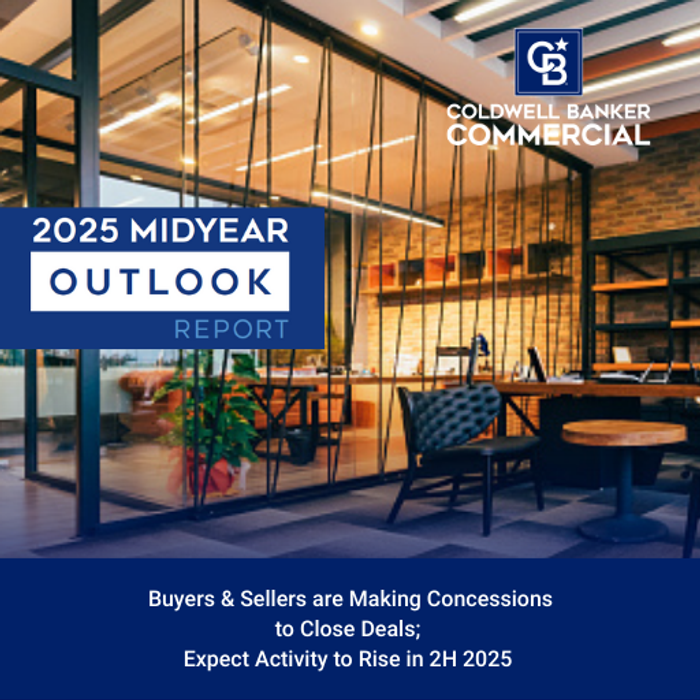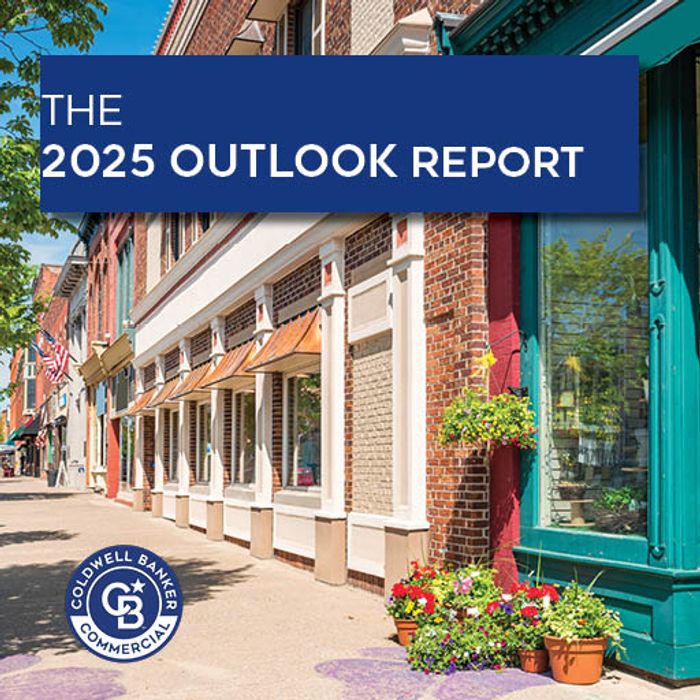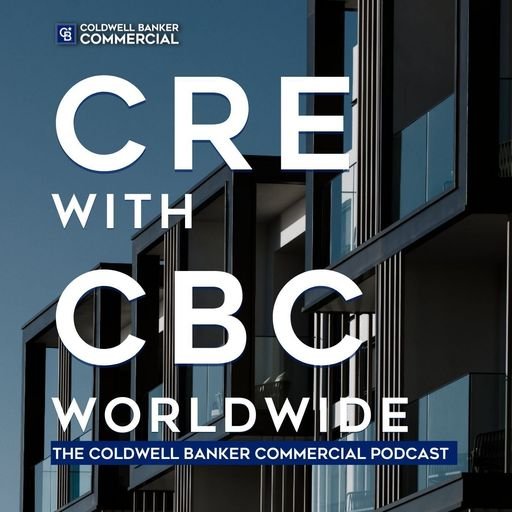Viewpoints
Industry insights, market outlook reports and commercial real estate
news, and trends from the Coldwell
Banker Commercial brand.
Brian Cunningham, CCIM with Coldwell Banker Commercial Elite, Closes Two Commercial Deals Totaling $11.365M in Fredericksburg, VA.
Coldwell Banker Commercial Elite Senior Associate Broker Brian Cunningham, CCIM, successfully closed two Fredericksburg transactions totaling $11.36 million, including a 79,240-square-foot office building for Rappahannock Area Community Services Board’s new crisis center. With strategic representation and deep market expertise, Cunningham and team delivered results that reflect the region’s growing demand for industrial and healthcare-aligned commercial assets.
Latest Viewpoints
See all Articles >
CRE Lenders Are Lending Again—But Only to Sponsors with Substance
Q2 bank earnings signal cautious optimism for commercial real estate, with stabilized credit conditions and disciplined lending practices reviving deal flow. As traditional banks tighten terms, private credit steps in—demanding transparency, resilience, and bulletproof underwriting from today’s sponsors.
Read More >>
Dan Spiegel, SIOR, SVP and Managing Director of Coldwell Banker Commercial, Named One of CRE’s Best Bosses
Coldwell Banker Commercial’s SVP and Managing Director Dan Spiegel has been named one of GlobeSt’s 2025 Best CRE Bosses, honoring his leadership in expanding CBC’s global footprint and driving industry excellence. Under Spiegel’s direction, CBC achieved over $7.6 billion in sales transactions in 2024 and launched key initiatives promoting diversity, innovation, and professional growth.
Read More >>
Conversations with Dan: AI in Construction with Dan Weisman
In this episode, Dan Spiegel and Dan Weisman discuss the transformative impact of construction technology on the commercial real estate industry. They explore current trends, the role of AI, robotics, and digital twins, as well as the challenges and opportunities that lie ahead. The conversation emphasizes the importance of education and change management in adopting new technologies, and how these innovations can help address pressing issues in construction and real estate. View the entire podcast on our YouTube channel.
Read More >>
The Return of the Office Is Getting Personal
New York City’s office market is rebounding, with tenant traffic just 5.5% below pre-pandemic levels and demand shifting toward curated, experience-driven spaces. As hybrid firms seek flexible layouts and wellness-forward amenities, landlords are redefining office environments to reflect tenant values and boost retention.
Read More >>
In Case You Missed It: August 2025 Recap
In this episode of the CBC ICYMI podcast, Matt Kornfeind, VP of Growth & Innovation, discusses new initiatives aimed at enhancing the professional development of brokers, including the launch of two property specialty groups. He highlights upcoming events such as the CBC Fall Summit and the Blueprint Conference, emphasizing the importance of networking and industry insights. The episode also encourages nominations for the Q3 Women of CBC champion, celebrating proactive leadership within the organization. Additionally, listeners are directed to valuable resources for success in commercial real estate and engaging conversations with industry leaders. Watch the video versions of our show on YouTube!
Read More >>
Coldwell Banker Commercial Atlantic Secures New Home for Celebrity Chef Nikko Cagalanan’s Acclaimed Restaurant, Kultura
Coldwell Banker Commercial Atlantic broker Hannah Kamba has secured a new downtown Charleston lease for celebrity chef Nikko Cagalanan’s award-winning restaurant, Kultura. The expanded 1,965-square-foot space at 267 Rutledge Avenue marks a major milestone for the acclaimed Filipino eatery, set to open later this year in one of the city’s most vibrant neighborhoods.
Read More >>Trend Reports
See all trend reports>-
 trends
trendsBuyers & Sellers are Making Concessions to Close Deals; Expect Activity to Rise in 2H 2025
Jul 14, 2025Commercial real estate activity is rebounding in 2025 as buyers and sellers align on pricing. Learn how shifting expectations, creative...
Read More >> -
 trends
trendsThe Trend Report: C-Store Evolution - From Snacks to Supermarkets and Beyond
Apr 1, 2025Convenience stores (c-stores) have evolved significantly since their urban beginnings in the 1920s, adapting to meet the needs of an...
Read More >> -
 trends
trends2025 Outlook Report: Expect Recovery to be Uneven Across Property Types and Locations
Feb 11, 2025Commercial real estate faced significant challenges in early 2024 due to delayed interest rate cuts, election uncertainty, inflation, and stricter...
Read More >>
Latest CBC Podcasts

Listen and learn from the Coldwell Banker Commercial brand on this commercial real estate focused podcast.
-
 Sep 9, 2025
Sep 9, 2025Conversations with Dan: AI in Construction with Dan Weisman
In this episode, Dan Spiegel and Dan Weisman discuss the transformative impact of construction technology on the commercial real estate industry. They explore current trends, the role of AI, robotics, and digital twins, as well...
-
 Sep 2, 2025
Sep 2, 2025In Case You Missed It: August 2025 Recap
In this episode of the CBC ICYMI podcast, Matt Kornfeind, VP of Growth & Innovation, discusses new initiatives aimed at enhancing the professional development of brokers, including the launch of two property specialty groups. He...
-
 Aug 26, 2025
Aug 26, 2025The Leadership Blueprint: Trust and Transformation with Ginger Wilcox
In this episode of CRE with CBC Worldwide, host Josh Best sits down with Ginger Wilcox, President of Better Homes and Gardens Real Estate, to explore her leadership philosophy grounded in trust, adaptability, and relevance....
Work with a CBC
professional for expert
guidance on all your
commercial needs.














